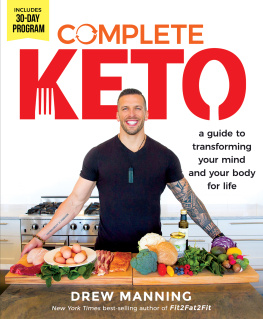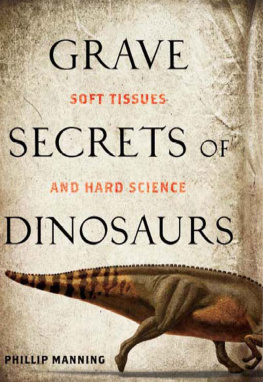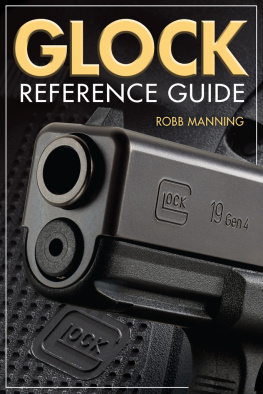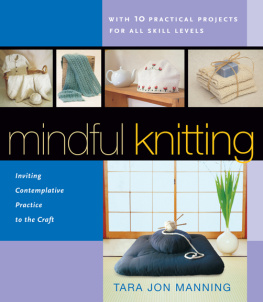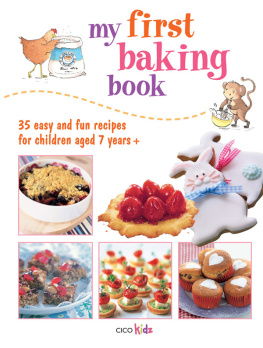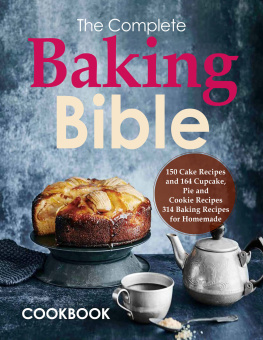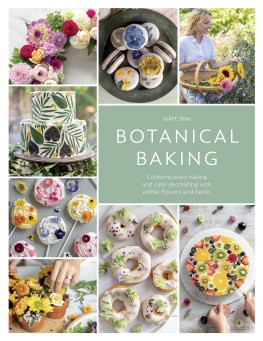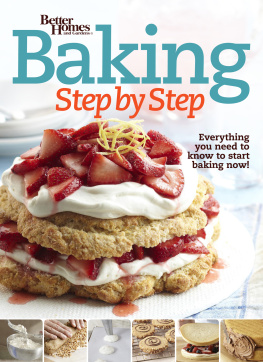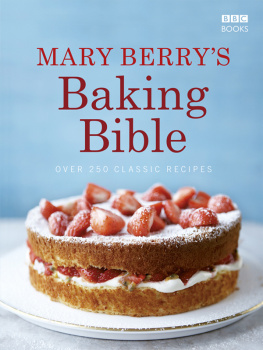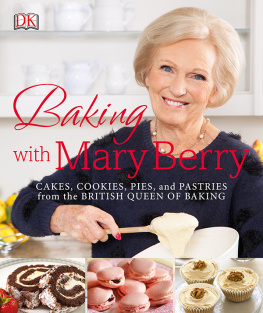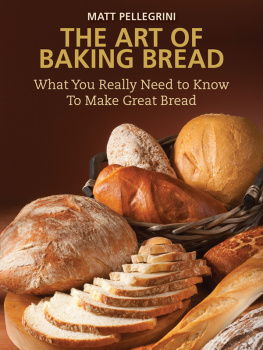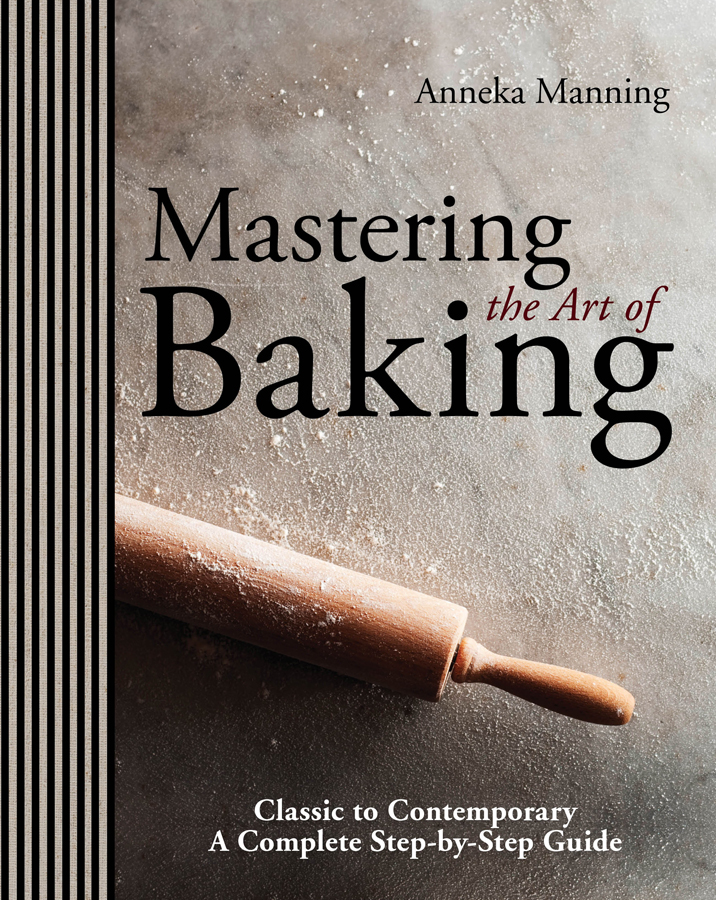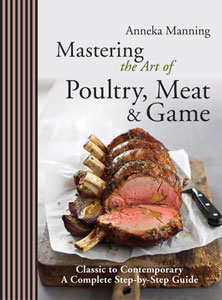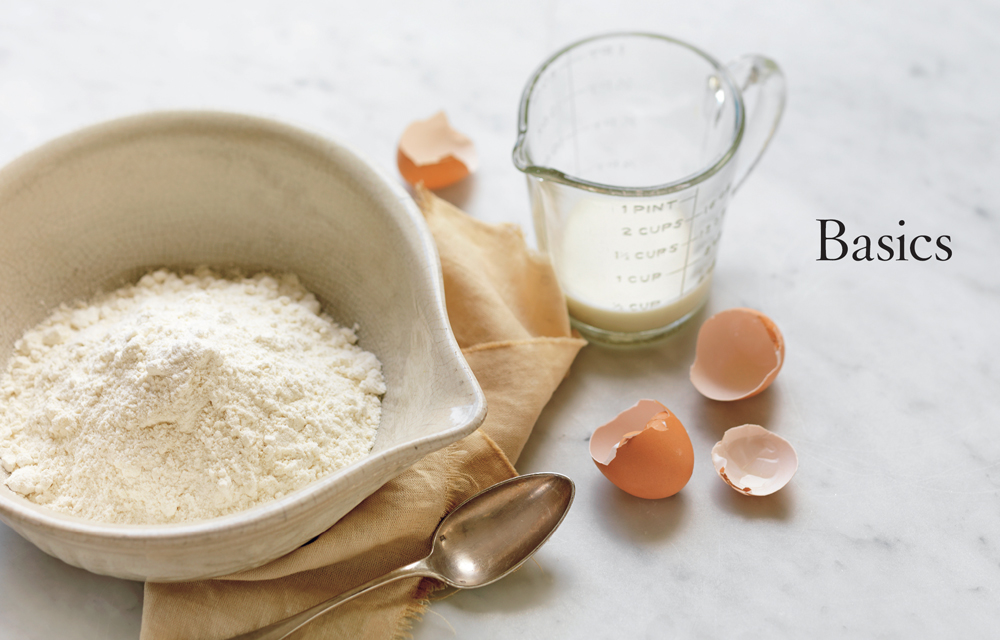Anneka Manning has spent more than 22 years in the food print media as a food writer and editor. She has worked for a range of leading food publications in Australia such as Australian Gourmet Traveller, VOGUE Entertaining + Travel, australian good taste, (which she helped to launch and make one of Australias most successful food magazines), The Australian Womens Weekly and Good Living (Sydney Morning Herald). In addition, Anneka has also compiled and written a number of successful, award-winning books, including good food and more good food. Anneka believes that the best food is simple food done well, relying on sound basics, simple techniques and good ingredients. Her food reflects the way she cooks, eats and entertains in her busy life. It is good food realistic, yet inspiring.
Introduction
There is no denying that baking is one of the more technical, and often the most challenging, forms of cooking. But it can also be one of the most rewarding.
The heavenly aroma of a freshly baked coffee and walnut cake, snowy white clouds of vanilla meringue, the buttery richness of a perfect brioche straight from your oven all contribute to a fulfilling baking experience. Mastering the Art of Baking will guide you through more than 280 fabulous and highly approachable recipes each accompanied by clear instructions, step-by-step photography and expert tips.
Learn how to make sourdough (the cheats way), traditional Indian naan, crumpets and Italian grissini, and serve up rich fruit cake, to-die-for jam-filled doughnuts, perfect scones and chocolate cinnamon babka. The easy-to-follow pastry recipes will have you making your own puff, choux and shortcrust like a professional (with minimal fuss), ready to create more-ish sausage rolls and meat pies, pretty fruit tarts or even an impressive croquembouche.
This comprehensive collection of classic recipes together with essential information about ingredients, equipment and techniques will guide you through the wonderful, but sometimes daunting, world of baking with ease so you can reap the rewards that successful home baking brings.
Common ingredients
Baking powder is a leavener that is used to help aerate mixtures. It is a combination of bicarbonate of soda (baking soda), cream of tartar (or other acidic powder) and usually cornflour (cornstarch) or rice flour (to absorb moisture). To make your own, combine teaspoon cream of tartar, teaspoon cornflour and teaspoon bicarbonate of soda to replace 1 teaspoon of commercial baking powder.
Bicarbonate of soda , also called baking soda, is not only a component of baking powder but can also be used as a leavener in its own right. It is activated with the aid of an acid, so is therefore used in mixtures with an acidic ingredient such as buttermilk, yoghurt, sour cream, citrus juice and even molasses. It is important to cook these mixtures as soon as possible, because the bicarbonate of soda is activated as soon as it comes into contact with the acidic ingredient if the mixture is left to sit, it wont rise as much as it should and the end product will have a coarser, more open texture.
Butter adds flavour, shortness/tenderness and colour. When it is beaten, air is incorporated which, in turn, helps leaven baked goods as they cook. It can also be rubbed into flour or melted and mixed with other ingredients. Unsalted butter is sweeter than salted and gives you more control over the amount of salt in your baking you can add as much as you want. If you are creaming butter, make sure it is softened by standing at room temperature for at least 30 minutes before using. If rubbing into dry ingredients, make sure it is chilled.
Buttermilk , a cultured milk, is made by adding souring agents to milk. It adds a subtle acidity to cakes and batters, such as pancakes, and is used in conjunction with bicarbonate of soda (baking soda), in goods such as soda bread and scones. Its acidity reacts with the alkaline properties of the soda to provide a particularly good lift. To make your own buttermilk, add 1 tablespoon of fresh lemon juice to 300 ml (10 fl oz) of regular milk.
Cocoa powder is the unsweetened ground powder made from grinding the cocoa solids when the cocoa butter (the fat) is removed from cocoa beans. Sift it before using to remove any lumps. Sweetened cocoa powder is sold as drinking chocolate. Dutch cocoa is considered the best quality cocoa powder, having a rich and intense flavour and a dark colour.
Cornflour , also known as cornstarch, is made from corn or maize (gluten-free) or wheat (labelled as wheaten cornflour). In baking, it is used in small quantities to replace plain (all-purpose) flour to give a lighter texture.
Cream is used sometimes in baked goods to enrich and tenderise. The fat content of cream determines how rich it is and also its whipping characteristics the higher the fat content, the easier it will be to whip and the thicker it will be when whipped (low-fat cream wont whip at all). Double (thick/heavy) cream has a 48 per cent butter fat content and is the thickest type of cream. Pouring cream, also known as whipping or single cream, has a fat content of 35 per cent. Thickened cream, also known as whipping cream, is pouring cream with gelatine added to thicken it slightly and make it more stable. It is ideal for whipping. Sour cream adds a pleasant acidity, and richness, to dishes.
Eggs enrich, give structure, bind, lighten, tenderise and add flavour to baked goods. Store them, pointed end down, in their original carton in the refrigerator. Bring eggs to room temperature before using if youre short on time, you can put them in a bowl of lukewarm water for 10 minutes. All the recipes in this book use 59/60 g (2 oz) eggs.
Flour provides the basic structure for the majority of baked goods. Self-raising flour is simply plain (all-purpose) flour with baking powder added. To make your own, add 2 teaspoons baking powder to 150 g (5 oz/1 cup) plain flour and sift several times before using.
Honey and golden syrup are used to sweeten baked goods, such as rich hot puddings, tarts, cakes and biscuits.
Milk is often used in cakes, puddings, breads and quick breads to help moisten and bind the dry ingredients, and to prevent the final baked product being heavy and dry. Always use full-cream cows milk in baking recipes unless otherwise specified.
Oil is often used in recipes that dont rely on air being incorporated into butter by the creaming method. Baked goods made with oil tend to store better and stay moister than those made with butter. Oils used in baking generally have a mild flavour, such as sunflower, vegetable and light olive oils.



